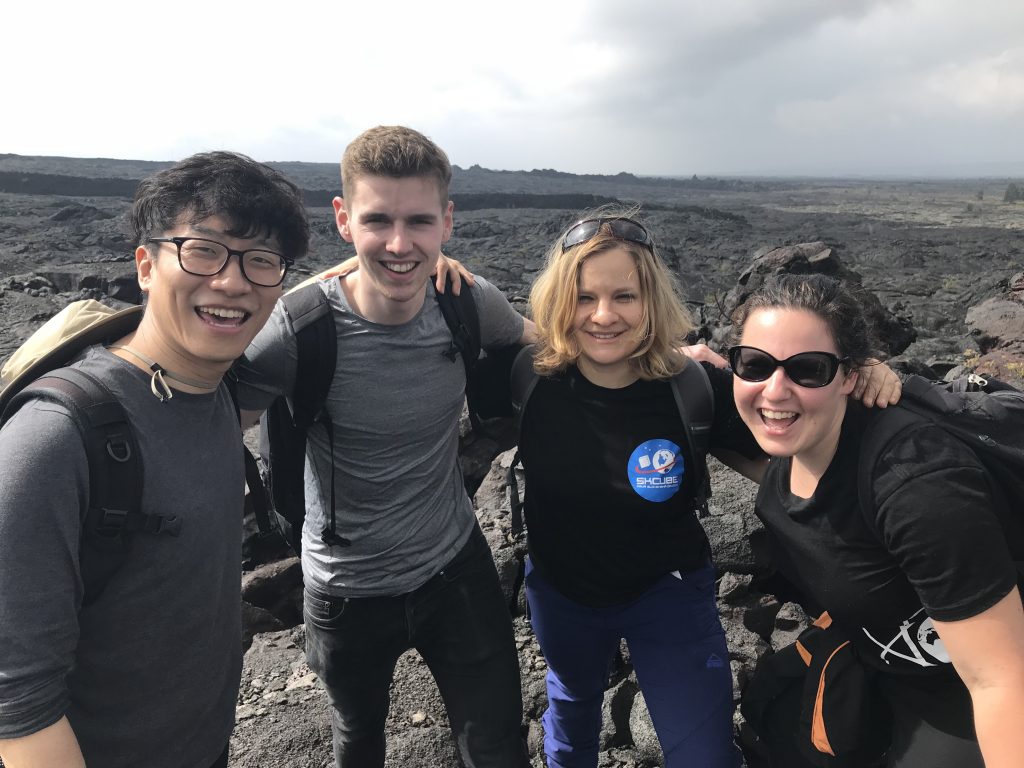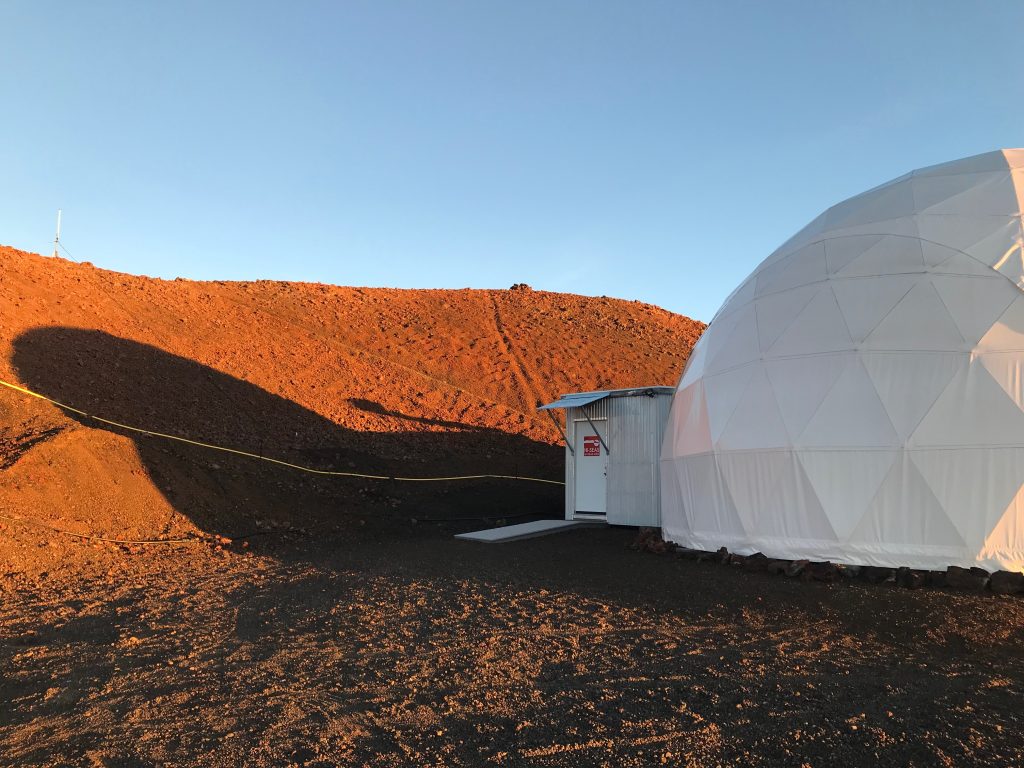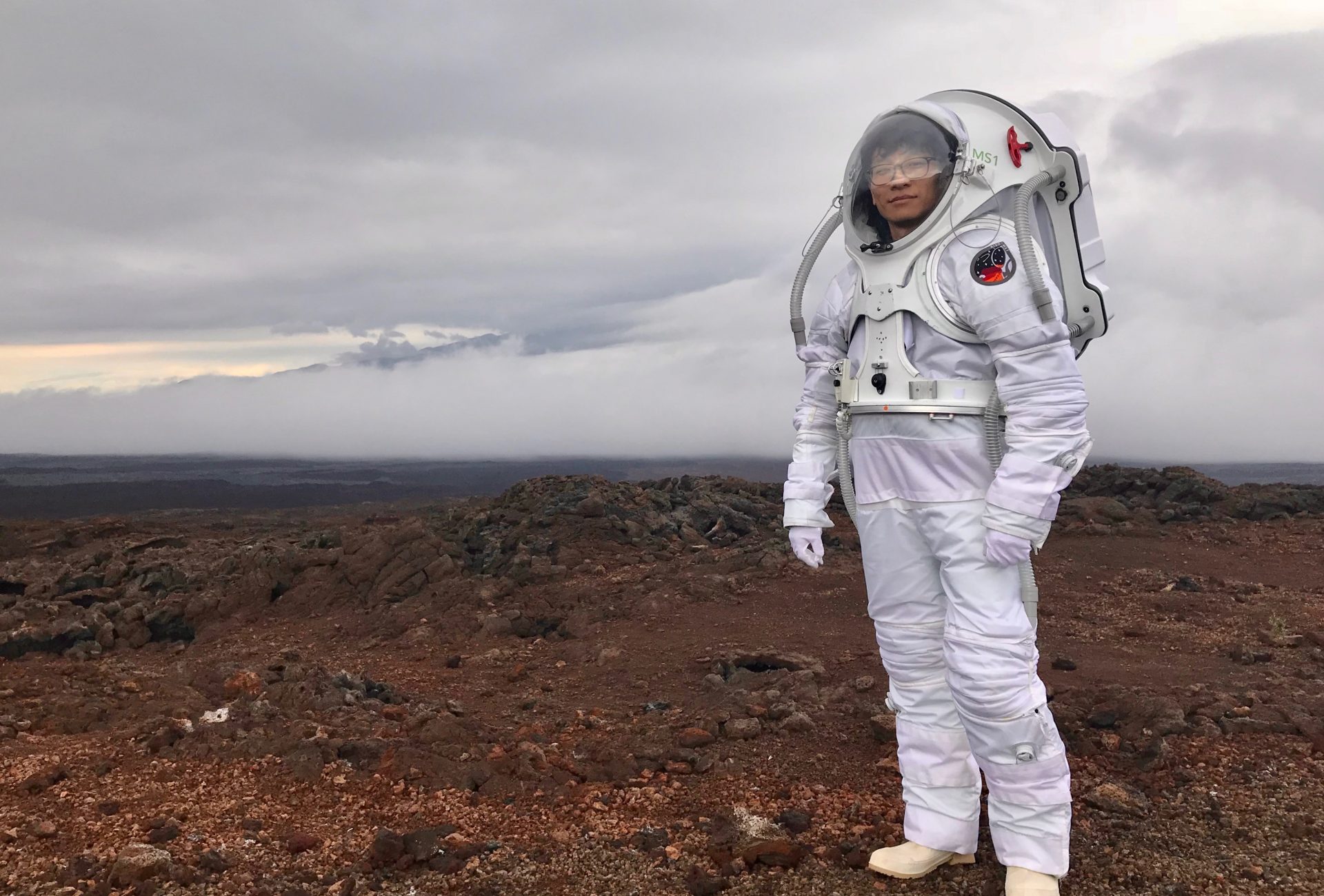For most, going to Mars is merely a childhood dream, but for Sukjin Han, that dream became a reality — all while never leaving Earth.
The Hawaii Space Exploration Analog and Simulation (HI-SEAS) is a project that is operated by the University of Hawaii and funded by NASA. The project hosts a select group of scientists for eight to twelve months in a secluded, barren environment that appears out of this world. While there, project-runners gather data for potential Mars exploration, all while being a part of a grander social experiment themselves: Could humans really survive — and stand living together — on Mars?
Last year, Han, an assistant professor of economics at The University of Texas at Austin, received the call notifying him that he was selected as the commander of the Mission VI crew, which was to embark on an eight-month endeavor, sequestered in a small, dome-shape habitat on the slopes of the Mauna Loa volcano on Hawaii’s big island.
“I hung up the phone and, for a moment, imagined myself as the protagonist in a science fiction movie,” he says, describing feeling both excited and nervous.
With a Kindle, Korean instant ramen, and paper and pencils for drawing in hand, Han set off to Hawaii to meet the Mission VI crew — a small international team comprised of two men and two women: Han; Calum Hervieu, an astrophysicist from Scotland; Michaela Musilova, an astrobiologist from Slovakia; and Lisa Stojanovski, science communicator from Australia.

“We were from entirely different backgrounds, a family only by virtue of our shared passion for dreaming beyond the limits of our own worlds,” Han says.
To become part of the mission, crew members submitted research proposals, engaged in several hours of interviews and underwent the same extensive psychological evaluations that NASA gives astronauts. Han’s research proposal was to develop a statistical model that would illustrate crew members’ interactions and dynamics, and how they were impacted by encouragement from Mission Support.
“Understanding this type of model will be helpful to design a system for the future that can promote productivity and reduce conflict and stress in this extremely isolated environment,” Han explains, adding: “Even if I do not end up going to space in the future, at least my data will.”
His proposed research addressed the HI-SEAS mission’s major challenges: minimizing conflict and maximizing collaboration. As commander, he would be in charge of leading the Mission VI crew over these hurdles, especially during emergency situations, which they would face much sooner than expected.
After arriving at the base, the crew was introduced to a whirlwind of information, packed into a mere nine days of physical and technical training, which included treks across the rocky volcanic terrain. “There was so much to remember, we could hardly absorb it all,” Han reflects.

The night before their mission they broke bread with HI-SEAS staff and Henk Rogers, the major investor of the base, gave a short speech: “Remember, you are making the future.” The next day, the door to the habitat was sealed and the mission began.
“Only the door was closed, but it seemed as though we had travelled the farthest distance between the two planets,” Han says. “What awaited us were virtual isolation and virtual danger, virtual distance and virtual desolation, virtual time lags and virtual reality. The virtuality was so real that it baffled me.”
The first day on the base, scientists familiarized themselves with the life support systems. “Constantly checking our batteries and water level and staying anxious were our Martian utility bills,” Han describes.
Then one night the network shut down. The crew lost communication and the life support system stopped. “It was our first emergency situation. It was also my first test as a commander,” Han notes. But the crew worked through it; and by morning, the network was restored.
The crew was getting used to their respective roles and had fun when they could. “In this secluded place, mealtime was a time to relax and to share the warmth of this odd family,” Han explains. “Cooking was almost like a scientific experiment, mixing chemicals with water. There were many funny occasions while preparing the meals.”
“Nothing seemed to be going wrong in the mission,” Han recalls.
Yet, just four days into the project, an accident occurred during an attempt to restart the generator. The crew member involved was taken to a hospital after sustaining a minor electric shock; and shortly after, another crew member, worried about the safety level of the mission, chose to withdraw from the project entirely. That was the end for Mission VI and the end of HI-SEAS Mars simulations, for now. (The habitat was recently revamped for moon simulations.)
After leaving the habitat, a NASA researcher debriefed Han, asking him to recount what happened on the mission. When finished, the researcher asked if Han wanted to know why he was selected for the project as commander, but if told, he would not be able to apply again.
Han remembers hesitating, and then confidently answering, “Well, I guess I don’t want to know.”
“Every failure, like every success, has its unique tale,” Han reflects. “I tried to comfort myself with the idea that most adventures assume a certain amount of failure, and perhaps that is the very essence of an adventure.”
